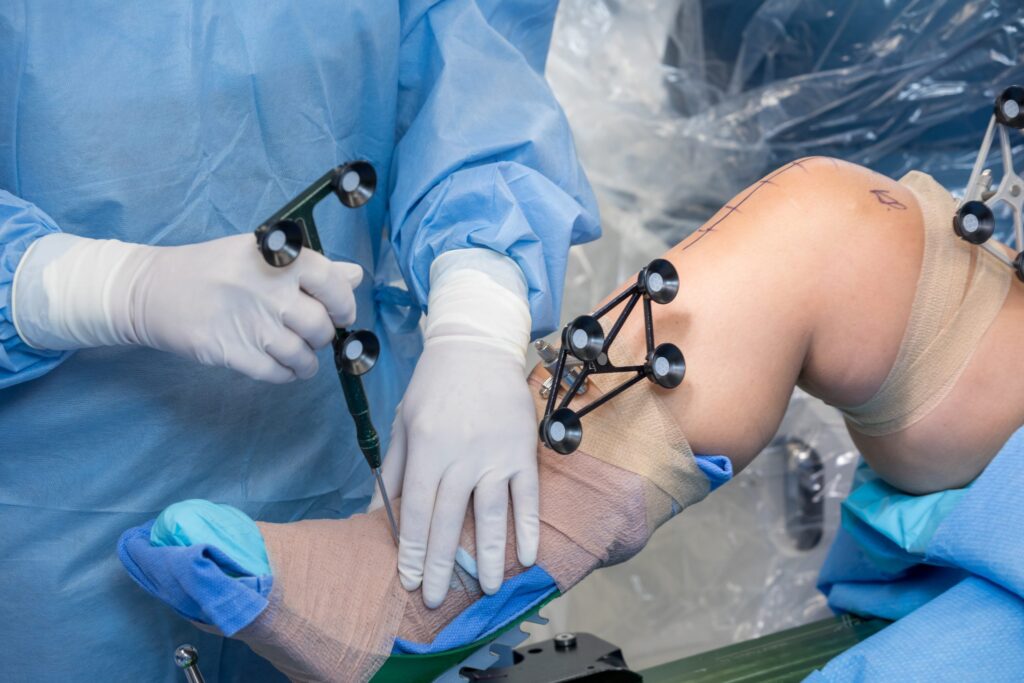Key Takeaways
- Mako Robotic Surgery offers precision and personalization in joint replacement procedures.
- Patients can expect a streamlined pre-operative preparation and a comprehensive surgical planning process.
- The procedure prioritizes less invasive techniques, aiming for faster recovery and reduced post-operative pain.
- Long-term rehabilitation is essential for optimal recovery, with personalized plans based on individual needs.
Introduction
Embarking on the surgery journey can be daunting, especially involving intricate procedures like joint replacement. However, with advancements in medical technology, robotic surgery has introduced a new level of precision and efficiency, offering patients increased confidence in their surgical outcomes. One such breakthrough is Mako Robotic Surgery, a revolutionary approach to joint replacement that leverages robotic-arm-assisted technology to ensure optimal results. For anyone considering this surgical option, understanding what to expect can provide peace of mind and prepare for the journey ahead.

Pre-Operative Preparation: Getting Ready for Surgery
The road to successful Mako Robotic Surgery begins with thorough pre-operative preparation. This phase primarily involves consultations with your healthcare provider to assess your health status and specific needs. Detailed imaging, often through a CT scan, is carried out to create a personalized 3D model of your knee or hip joint. This model is the foundation for a tailored surgical plan to achieve your new joint’s best possible alignment and fit. Mako robotic surgery for knees & hips is particularly beneficial for individuals seeking accuracy and customization, as it provides surgeons with a precise roadmap to follow during the procedure.
Understanding the Surgical Process
Dive into the surgical process with a clear understanding of how Mako Robotic Surgery operates. This state-of-the-art technique integrates pre-operative planning with enhanced intra-operative guidance. Once the personalized plan is confirmed, surgeons utilize the robotic arm to assist with the procedure. The robotic system is essential to perform the surgery with the highest level of accuracy and guarantee that only the necessary amount of bone is removed. In addition to reducing trauma, this encourages quicker bone fusion with the implant. Because the procedure is minimally invasive, patients might have less bleeding and less pain afterward.
Post-Operative Care: Navigating Recovery
Patients can anticipate a less taxing post-operative experience with Mako Robotic Surgery, as recovery is essential to the surgical process. Patients are usually advised to begin light exercise shortly after surgery to increase blood flow and lower the risk of clots. The emphasis is on gradually regaining mobility, with most individuals able to walk with assistance within a few days. Due to the precision of the surgery, many patients report lower levels of pain and swelling, making the initial recovery phase more manageable. Pain management strategies and physical therapy are integral to a successful recovery, aiming to restore function and improve quality of life.

Rehabilitation: The Path to Full Recovery
While surgery marks the beginning of the physical recovery process, rehabilitation is where long-term recovery truly takes shape. It’s essential to adhere closely to the personalized rehabilitation plan provided by your healthcare team. This plan typically includes progressively challenging exercises designed to strengthen the muscles around the joint, enhance flexibility, and restore the full range of motion. The goal is to support a return to normal activities, with the guidance of physiotherapists playing a pivotal role. Remember that every individual’s recovery journey is unique, and maintaining open communication with your healthcare professionals is critical to addressing any concerns and tracking progress.
The Benefits of Choosing Mako Robotic Surgery
The decision to undergo surgery should be made carefully, considering the potential benefits and risks. In the case of Mako Robotic Surgery, the advantages are significant. Robotic technology allows for unmatched precision in implant positioning, which is critical for ensuring the longevity and functionality of the new joint. Patients often enjoy higher satisfaction due to less pain, quicker return to daily activities, and a lower risk of complications. Additionally, the accuracy of the procedure can lead to better overall joint performance, enhancing quality of life and allowing for greater participation in physical activities.
Conclusion
Choosing Mako Robotic Surgery for your joint replacement needs introduces a host of benefits characterized by precision, efficiency, and reduced recovery times. As medical technology evolves, integrating robotic systems into surgical procedures represents a significant step forward in patient care. By thoroughly understanding each phase of the process—from pre-operative planning to long-term rehabilitation—patients can confidently enter surgery, knowing they have chosen an option that aligns with their health needs and lifestyle goals. Embracing the possibilities of robotic surgery paves the way to a successful surgical outcome and a path toward reclaiming an active, fulfilling life.

More Post
How a Higher VA Disability Rating Can Impact Your Benefits
Maintaining Mental Wellness: Tips and Strategies for Seniors